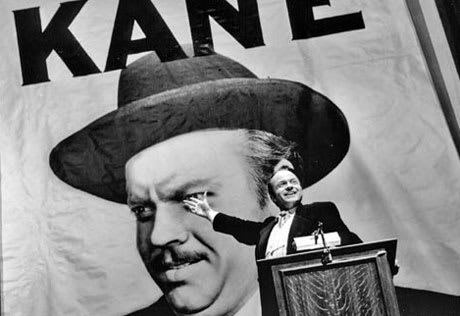Even heady proclamations like "the greatest film ever made" cannot overstate how powerful this picture is. The story of a mercurial newspaper magnate who began his career as an idealistic entrepreneur, raised with a silver spoon in his mouth, who, over the course of his life, breaks down, becoming an egomaniacal tyrant is like an insatiable addiction. Welles's tale of American big business and the cult of personality that arises from unabated success has become as fundamental to cinema as The Odyssey as to classical drama. Every viewing of Citizen Kane brings out something new, fresh and unseen. Roger Ebert's astute audio commentary is a treasure; it's old, from an earlier Warner DVD release, but I remember listening to his notes on the opening sequence. Until Ebert pointed it out, I never noticed the placement of Kane's room lit in the same place in frame through all the montage shots of his estate. Peter Bogdanovich, who knew Welles better than most other living people, contributes equally significant reflections. The layers of complexity and intrigue entwine themselves both inside and outside the work of art. The thematic connections of character and the fallibility of great men ― the analysis of genius ― is fascinating on screen and even more so when connecting the author of the picture, Welles, to his target of attack: newspaper baron William Randolph Hearst. The two personalities ― two sides of the same coin ―converge like a perfect storm of culture, art, politics and the American dream; it's a great socio-political cockfight. The Citizen Kane Blu-Ray would certainly not be complete without monumental artefact "The Battle Over Citizen," PBS's clinical documentary about the career-long effect of Kane on Welles and Hearst over the course of their lives. The doc can rest on its laurels, having been Oscar nominated for Best Documentary in 1995. The magnificent deep focus cinematography, the monumental transitions, the long take scene coverage, the time-compression editing and the structurally innovative narrative plotting are impossible to miss. It's a technical triumph, a stylistic landmark film for sure, but we can't look past some of the emotional moments that have the power to move us even more profoundly. The scene that resonates the most is the sequence that gets Kane to travel with his first wife by car to Susan Alexander's house. The sequence is built up to terrifying levels. We know where it's going to go ― outing Kane's tryst with Alexander ― which, as we know from the "March of Times" sequence, broke up his marriage. But when Jim W. Geddes, Kane's political rival, is revealed to be also in the house, we're shocked into a stunned silence. The conversation in Alexander's bedroom, with Kane, Geddes, Mrs. Kane and Alexander, which ensues is the key turning point. It's a downward trajectory from there, a character arc as grandiose as the rise and fall of Michael Corleone or Lawrence of Arabia. These characters, whether real or not, fascinate us because of what's hidden. Throughout the film, we're purposely kept at a distance from Charles Foster Kane, his hubris and confident arrogance acting like an impenetrable barrier to his inner turmoil. Welles's restraint in keeping this turmoil from us is like a striptease of sorts. This theme is foreshadowed in the "March of Time" opening, where we get the public summary of his life. Ironically, throughout, the private summary of his life is as beguiling and mysterious. This is why the seemingly trite Rosebud MacGuffin used to drive the picture works so well. It feels like a wonky device to tell the story until the last moment, where the Rosebud reveal ceases to be a MacGuffin and becomes an earth shatteringly profound revelation of Kane's deep-rooted agony. In one image we get it; we get it all. Like Susan Alexander's jigsaw puzzle metaphor, it's the piece that opens us up to Kane, however small and slight ― the loss of his mother and childhood. His is a monumental tragedy worthy of the bible.
(Warner)Citizen Kane
Orson Welles

BY Alan BacchusPublished Jan 13, 2012